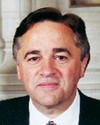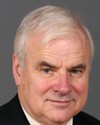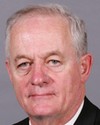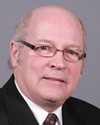Regarding drugs, there have been a number of studies over the last ten years with many recommendations and many of them contradictory. Consequently, two years ago the drugs directorate developed a major re-engineering initiative called drugs directorate renewal and has been pursuing an intensive process in which all aspects of its operations have been reviewed and streamlined within an environment of scarce resources. Over that period of time the directorate has consulted fully with all stakeholders. The drugs directorate has made many changes to its programs and policies with the aim of streamlining operations and fixing "known" problems. While the auditor's report recognizes the strengths of this renewal exercise, it does not adequately recognize the progress made in several areas.
The drugs directorate regulates a wide range of drugs, including radiopharmaceuticals, biologics and narcotics. These products represent different risks and the drugs directorate systems are designed according to these risks. Specifically in the area of high risk drugs, the drugs directorate has significantly improved its review performance without jeopardizing the well-being of Canadians. Approval times for submissions received and approved since January 1993, when a new policy was implemented, show substantial decreases in time taken.
The government was and is continuing to take action with respect to the key issues identified in past studies and on specific measures to deal with high risk medical devices.
As part of the review of federal regulatory program, the Minister of National Health and Welfare established in 1992 a medical devices review committee, known as the Hearn committee, to review the existing infrastructure and make recommendations on the regulation of medical devices in the future. The committee's report, "Direction for Change", was released in August 1992. The report identified the key issues as well as made recommendations with respect to regulation of medical devices. The minister accepted the committee's recommendations in principle. Subsequently the health protection branch, HPB, developed a strategic implementation plan entitled "Development Plan for Improved Medical Devices Program" which was endorsed by the Hearn committee in April 1993.
In accordance with the recommendations of the development plan, the following key issues have been addressed or are in process.
Regarding re-engineering of the medical devices program, a separate "medical devices bureau" was established in September 1993. To improve the level of service to its clients, the medical devices program was further consolidated by functionnally linking medical device staff in the five HPB regional offices to the bureau. Key management and staff positions have been filled within the bureau. An improvement in service has been achieved by developing and implementing internal standards operating procedures. The backlog of submissions awaiting review has been eliminated.
Regarding risk based approach to manage medical devices in the Canadian market place, with the help of an advisory committee comprising medical devices stakeholders, a risk based classification system, RBCS, for medical devices has been developed. The intent of the risk based classification system is to ensure that a device is given an appropriate level of scrutiny based on the risk it presents to its user.
A set of proposed regulations based on the risk based classification of devices has been developed and released to the program's clients for their input.
Regarding cost recovery initiative the cost recovery initiative received approval from the Treasury Board on May 18, 1995. The program will charge a range of fees commensurate with level of the services provided to the medical device industry. The proposed fee schedule has been published in Canada Gazette I, June 10, 1995.
Regarding improved communications with clients of the medical devices program, managers of the program now meet with representatives of medical device industry regularly to discuss matters of common interest.
Consultation sessions are being held with the program clients to obtain their input in developing new regulatory requirements and in implementing cost recovery.
In addition to the existing publications, information letters, medical devices alerts, dear doctor letters, it is your health, a newsletter entitled "medical devices bulletin" has been introduced to enhance external communications. The first issue was published in June 1995.
A medical devices bulletin board service has been established to provide program related information to medical device clients electronically.
A communication plan for the program is being developed with the help of a consultant.
A new computer system has been installed to operate the program's various databases. Program clients have access to these databases.
Regarding international harmonization the risk based classification system and proposed regulations were developed keeping international harmonization in mind.
Mutual Recognition agreements are under consideration. Canada is negotiating with the European Union, EU, to ease market access for Canadian products into Europe and vice versa. The proposed agreement would enable Canadian manufacturers to meet EU regulatory requirements in Canada in a cost effective manner and simplify the process for Canadian exporters to get needed EU approval based on mutual recognition of testing and certification procedure.
Similar negotiations are being initiated with the United States of America.
Question No. 219-








